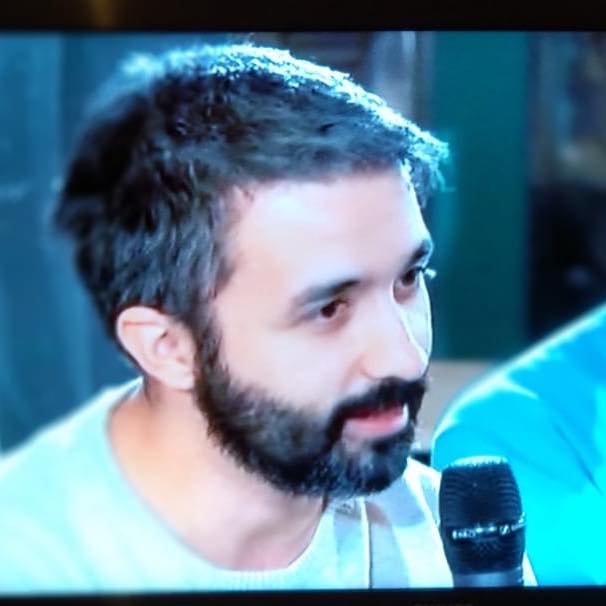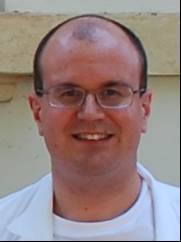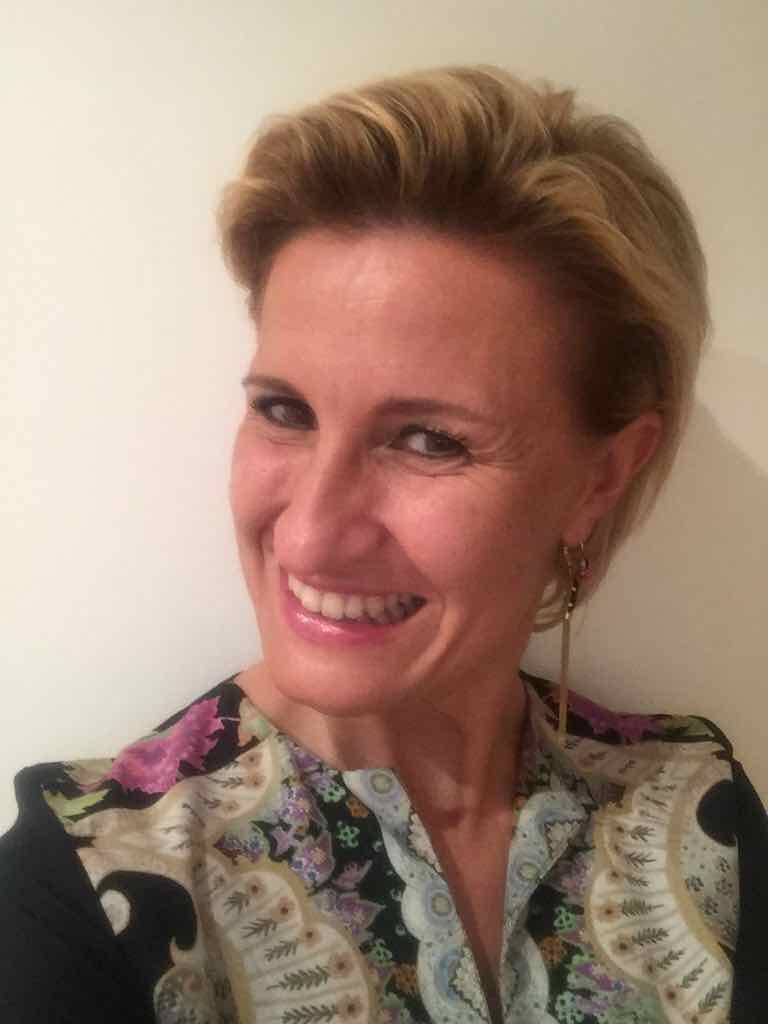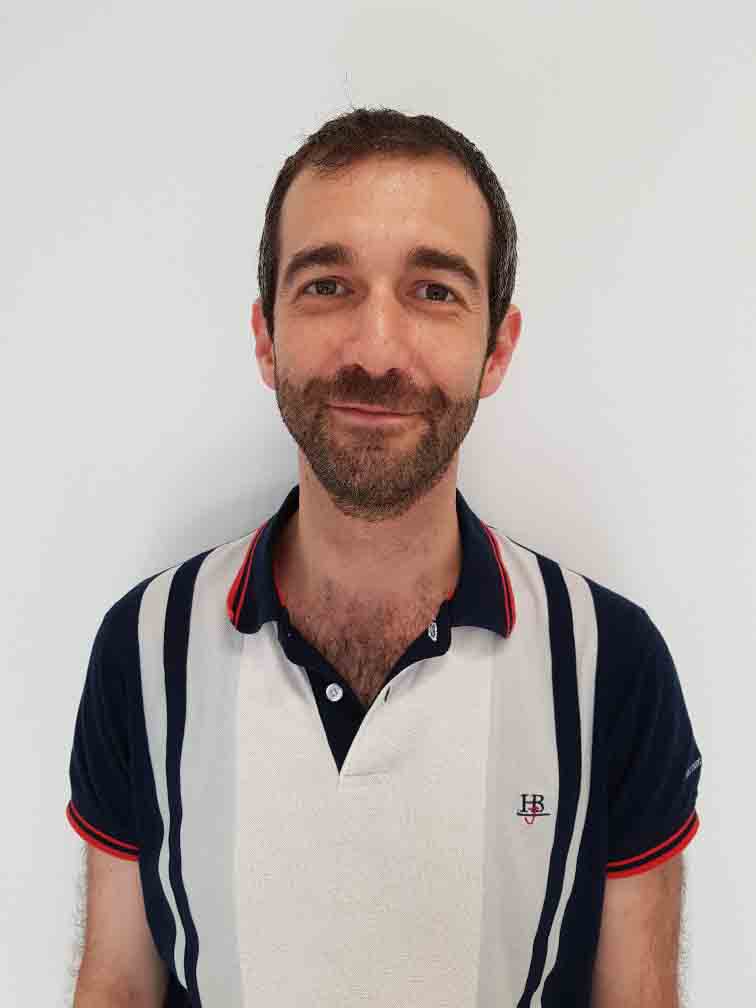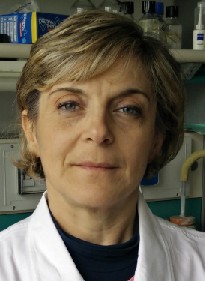Studiare
In questa sezione è possibile reperire le informazioni riguardanti l'organizzazione pratica del corso, lo svolgimento delle attività didattiche, le opportunità formative e i contatti utili durante tutto il percorso di studi, fino al conseguimento del titolo finale.
Calendario accademico
Il calendario accademico riporta le scadenze, gli adempimenti e i periodi rilevanti per la componente studentesca, personale docente e personale dell'Università. Sono inoltre indicate le festività e le chiusure ufficiali dell'Ateneo.
L’anno accademico inizia il 1° ottobre e termina il 30 settembre dell'anno successivo.
Calendario didattico
Il calendario didattico indica i periodi di svolgimento delle attività formative, di sessioni d'esami, di laurea e di chiusura per le festività.
| Periodo | Dal | Al |
|---|---|---|
| INF TN 2° ANNO 1° SEM | 7-set-2020 | 12-nov-2020 |
| INF TN 1° ANNO 1° SEM | 5-ott-2020 | 18-dic-2020 |
| INF TN 3° ANNO 1° SEM | 14-ott-2020 | 18-dic-2020 |
| INF TN 1° ANNO 2° SEM | 1-feb-2021 | 1-apr-2021 |
| INF TN 3° ANNO 2° SEM | 4-mar-2021 | 23-apr-2021 |
| INF TN 2° ANNO 2° SEM | 3-mag-2021 | 2-lug-2021 |
| Sessione | Dal | Al |
|---|---|---|
| INF TN - sessione invernale 2° anno (1^parte) | 21-dic-2020 | 22-dic-2020 |
| INF TN - sessione invernale 2° anno (2^parte) | 7-gen-2021 | 20-gen-2021 |
| INF TN - sessione invernale 1°-3° anno | 8-gen-2021 | 29-gen-2021 |
| INF TN - sessione estiva 1° anno (1^parte) | 9-apr-2021 | 26-apr-2021 |
| INF TN - sessione estiva 2° anno (1^parte) | 19-apr-2021 | 30-apr-2021 |
| INF TN - sessione estiva 2° anno (2^parte) | 12-lug-2021 | 30-lug-2021 |
| INF TN - sessione estiva 1°-3° anno (2^parte) | 19-lug-2021 | 30-lug-2021 |
| INF TN - sessione autunnale 1° anno | 6-set-2021 | 30-set-2021 |
| INF TN - sessione autunnale 2°-3° anno | 8-set-2021 | 30-set-2021 |
| Sessione | Dal | Al |
|---|---|---|
| SESSIONE AUTUNNALE | 1-ott-2021 | 30-nov-2021 |
| SESSIONE PRIMAVERILE | 1-mar-2022 | 30-apr-2022 |
| Periodo | Dal | Al |
|---|---|---|
| FESTIVITA' OGNISSANTI | 1-nov-2020 | 1-nov-2020 |
| FESTIVITA' IMMACOLATA CONCEZIONE | 8-dic-2020 | 8-dic-2020 |
| VACANZE DI NATALE | 24-dic-2020 | 3-gen-2021 |
| VACANZE DI PASQUA | 4-apr-2021 | 5-apr-2021 |
| FESTIVITA' DELLA LIBERAZIONE | 25-apr-2021 | 25-apr-2021 |
| FESTIVITA' DEL LAVORO | 1-mag-2021 | 1-mag-2021 |
| Descrizione | Periodo | Dal | Al |
|---|---|---|---|
| INF TN - tirocinio 2° anno 1^ esp | INF TN - tirocinio 2° anno 1^ esp | 17-nov-2020 | 16-dic-2020 |
| INF TN - tirocinio 2° anno 2^ esp | INF TN - tirocinio 2° anno 2^ esp | 21-gen-2021 | 26-feb-2021 |
| INF TN - tirocinio 3° anno 1^ esp | INF TN - tirocinio 3° anno 1^ esp | 22-apr-2021 | 28-mag-2021 |
| INF TN - tirocinio 1° anno 1^ esp | INF TN - tirocinio 1° anno 1^ esp | 27-apr-2021 | 4-giu-2021 |
| INF TN - tirocinio 3° anno 2^ esp | INF TN - tirocinio 3° anno 2^ esp | 7-giu-2021 | 14-lug-2021 |
| INF TN - tirocinio 1° anno 2^ esp | INF TN - tirocinio 1° anno 2^ esp | 14-giu-2021 | 14-lug-2021 |
| INF TN - tirocinio 3° anno 3^ esp | INF TN - tirocinio 3° anno 3^ esp | 16-ago-2021 | 20-ott-2021 |
| INF TN - tirocinio 2° anno 3^ esp | INF TN - tirocinio 2° anno 3^ esp | 2-set-2021 | 8-ott-2021 |
Calendario esami
Gli appelli d'esame sono gestiti dalla Unità Operativa Segreteria Corsi di Studio Medicina.
Per consultazione e iscrizione agli appelli d'esame visita il sistema ESSE3.
Per problemi inerenti allo smarrimento della password di accesso ai servizi on-line si prega di rivolgersi al supporto informatico della Scuola o al servizio recupero credenziali
Per dubbi o domande leggi le risposte alle domande più frequenti F.A.Q. Iscrizione Esami
Docenti
 mariangelabassetti@gmail.com
mariangelabassetti@gmail.com
 anita.bevilacqua@apss.tn.it
anita.bevilacqua@apss.tn.it
 borghesi.a@mail.apss.tn.it
borghesi.a@mail.apss.tn.it
 elena.bravi@apss.tn.it
elena.bravi@apss.tn.it
 cembrani@apss.tn.it
cembrani@apss.tn.it
 dellai@tn.apss.tn.it
dellai@tn.apss.tn.it
 alessandra.magotti@tin.it
alessandra.magotti@tin.it
 loredana.pancheri@univr.it
loredana.pancheri@univr.it
 marina.pecoraro@apss.tn.it
marina.pecoraro@apss.tn.it
 elda.righi@univr.it
elda.righi@univr.it
 cinzia.vivori@apss.tn.it
cinzia.vivori@apss.tn.it
Piano Didattico
Il piano didattico è l'elenco degli insegnamenti e delle altre attività formative che devono essere sostenute nel corso della propria carriera universitaria.
Selezionare il piano didattico in base all'anno accademico di iscrizione.
1° Anno
| Insegnamenti | Crediti | TAF | SSD |
|---|
Laboratori professionali (primo anno)
2° Anno Attivato nell'A.A. 2021/2022
| Insegnamenti | Crediti | TAF | SSD |
|---|
Laboratori professionali (secondo anno)
3° Anno Attivato nell'A.A. 2022/2023
| Insegnamenti | Crediti | TAF | SSD |
|---|
Laboratori professionali (terzo anno)
| Insegnamenti | Crediti | TAF | SSD |
|---|
Laboratori professionali (primo anno)
| Insegnamenti | Crediti | TAF | SSD |
|---|
Laboratori professionali (secondo anno)
| Insegnamenti | Crediti | TAF | SSD |
|---|
Laboratori professionali (terzo anno)
Legenda | Tipo Attività Formativa (TAF)
TAF (Tipologia Attività Formativa) Tutti gli insegnamenti e le attività sono classificate in diversi tipi di attività formativa, indicati da una lettera.
Fondamenti morfologici e funzionali della vita (2020/2021)
L'insegnamento è organizzato come segue:
Programma
------------------------
MM: FISIOLOGIA
------------------------
1. Fisiologia cellulare 1.1. Composizione e caratteristiche biofisiche della membrana cellulare. 1.2. Trasporto passivo e attivo. Osmosi. 2. Fisiologia dei tessuti eccitabili e contrattili 2.1. Potenziale di riposo e potenziale d'azione. Periodo refrattario assoluto e relativo. Propagazione del potenziale d’azione. Potenziali graduati. 2.2. Classificazione delle fibre nervose. Sinapsi chimiche. Potenziale post-sinaptico eccitatorio e inibitorio. Sommazione spaziale e temporale dei potenziali postsinaptici. 2.3. Accoppiamento elettro-meccanico nel muscolo scheletrico. Il potenziale del muscolo cardiaco. Ilmuscolo liscio. 2.4. Proteine contrattili. 3. Sistema nervoso centrale e periferico 3.1. Organizzazione funzionale del sistema nervoso centrale. 3.2. Riflessi spinali. Funzioni del sistema nervoso autonomo. Tronco dell’encefalo e ipotalamo. Movimento volontario. Cervelletto e gangli della base. Sonno e veglia. Linguaggio. 3.3. Sensibilità somatica e dolore. 4. Apparato cardiovascolare 4.1. Generazione e conduzione dell'eccitamento. Pacemaker cardiaco. Riflesso barocettivo. Regolazione intrinseca ed estrinseca della funzionalità cardiaca: meccanismo di Frank-Starling, precarico, postcarico e contrattilità. Ciclo cardiaco. Gittata sistolica e gittata cardiaca. 4.2. Elementi di idrostatica e idrodinamica: pressione, flusso, resistenza e viscosità. Legge di Poiseuille. Flusso laminare e turbolento. Legge di Laplace. 4.3. Arterie, capillari e vene. Scambi transcapillari. Circolo venoso. Polso arterioso centrale e periferico; origine e propagazione dell’onda sfigmica. 4.4. Regolazione della pressione arteriosa. Regolazione a breve e lungo termine della pressione arteriosa: barocettori, sistema reni-liquidi corporei, sistema renina-angiotensina-aldosterone. 4.5. Ritorno venoso e fattori che favoriscono il ritorno venoso. Emodinamica del circolo polmonare. 5. Apparato respiratorio 5.1. Meccanica respiratoria. Pressione intratoracica e intrapolmonare e loro variazioni durante la respirazione. 5.2. Volumi e capacità polmonari: definizioni e misure. 5.3. Leggi dei gas. Composizione dell’aria inspirata, espirata e alveolare e pressioni parziali dei gas. Spazio morto anatomico e fisiologico. Ventilazione polmonare e alveolare. Diffusione dei gas tra polmoni e sangue. Trasporto dell'ossigeno. 5.4. Curva di dissociazione dell’ossiemoglobina. Influenza di pCO2, pH e temperatura. Aspetti quantitativi del trasporto dell’ossigeno nel sangue. Trasporto dell'anidride carbonica. 5.5. Controllo nervoso e chimico della respirazione: entri respiratori bulbo-pontini, chemocettori periferici e centrali. 6. Apparato renale 6.1. Nefrone: glomerulo e tubulo. Circolazione renale. Autoregolazione. Processo di ultrafiltrazione. Composizione dell’ultrafiltrato. Meccanismi di riassorbimento e secrezione. Clearance. Riassorbimento tubulare del glucosio. Riassorbimento dell’acqua. 6.2. Concentrazione e diluizione dell’urina. Regolazione ormonale: ADH, aldosterone, renina. Meccanismi di compenso renali alle alterazioni dell'equilibrio acido-base. Minzione. 6.3. Meccanismi di mantenimento del volume e della osmolarità dei liquidi extracellulari. 7. Apparato digerente 7.1. Secrezione salivare. Esofago. Riempimento e svuotamento dello stomaco. Secrezione gastrica: ghiandole della mucosa gastrica; composizione e funzioni del succo gastrico. Controllo nervoso e umorale della motilità e della secrezione gastrica. Vomito. 7.2. Secrezione esocrina del pancreas e secrezione biliare. Controllo nervoso e umorale della secrezione pancreatica. Composizione, controllo nervoso e umorale della secrezione biliare. 7.3. Controllo nervoso ed umorale della motilità e della secrezione intestinale. Defecazione. 7.4. Assorbimento intestinale di carboidrati, proteine, lipidi, vitamine, acqua ed elettroliti. 7.5. Controllo nervoso a breve termine e lungo termine dell’appetito. 8. Sistema endocrino 8.1. L’asse ipotalamo-ipofisi-ghiandole endocrine. 8.2. Ormoni dello stress: cortisolo e catecolamine 8.3. Ormoni dell’allattamento: prolattina e ossitocina 8.4. Ormoni sessuali 8.5. Ormoni del controllo metabolico a breve e lungo termine: insulana, glucagone, ormoni tiroidei e GH.
------------------------
MM: ANATOMIA UMANA
------------------------
Apparato locomotore Apparato cardiocircolatorio Apparato polmonare Apparato renale Apparato gastroenterico –pancreas e fegato Sistema nervoso
------------------------
MM: ISTOLOGIA
------------------------
- Cenni sui metodi istologici - La cellula: plasmalemma, citosol e organelli, nucleo - Tessuto epiteliale di rivestimento e ghiandolare - Tessuti di origine mesenchimale - Connettivo propriamente detto - Cartilagine - Osso - Muscolo scheletrico, cardiaco, liscio - Tessuto nervoso
Bibliografia
| Autore | Titolo | Casa editrice | Anno | ISBN | Note |
|---|---|---|---|---|---|
| Martini et al. | Fondamenti di Anatomia e Fisiologia (Edizione 4) | Edises | 2019 | 978-88-3319-053-2 | |
| Kenneth S. Saladin | Anatomia & fisiologia (Edizione 2) | PICCIN | 2019 | 8829929557 | |
| Bani et al. | Istologia per le lauree triennali e magistrali | Sorbona | 2018 | 9788879476782 |
Modalità d'esame
L'esame è scritto. Viene svolto contemporaneamente per i moduli di Anatomia, Istologia e Fisiologia. La prova consiste in 100 domande a scelta multipla, ognuna con 5 risposte possibili di cui una corretta. Risposta corretta, 1 punto; risposta mancante/errata, 0 punti. La sufficienza viene valutata sul totale delle risposte corrette. La sede dell'esame è il Polo Universitario di Trento.
Prospettive
Avvisi degli insegnamenti e del corso di studio
Per la comunità studentesca
Se sei già iscritta/o a un corso di studio, puoi consultare tutti gli avvisi relativi al tuo corso di studi nella tua area riservata MyUnivr.
In questo portale potrai visualizzare informazioni, risorse e servizi utili che riguardano la tua carriera universitaria (libretto online, gestione della carriera Esse3, corsi e-learning, email istituzionale, modulistica di segreteria, procedure amministrative, ecc.).
Entra in MyUnivr con le tue credenziali GIA: solo così potrai ricevere notifica di tutti gli avvisi dei tuoi docenti e della tua segreteria via mail e a breve anche tramite l'app Univr.
Gestione carriere
Orario lezioni
Documenti
| Titolo | Info File |
|---|---|
|
|
pdf, it, 437 KB, 07/03/24 |
|
|
pdf, it, 457 KB, 16/04/24 |
|
|
pdf, it, 450 KB, 05/04/24 |
|
|
pdf, it, 628 KB, 08/01/24 |
|
|
pdf, it, 1453 KB, 07/02/24 |
Guida ai programmi degli insegnamenti
Guida ai programmi degli insegnamenti
Documenti
| Titolo | Info File |
|---|---|
|
|
pdf, it, 1594 KB, 12/12/22 |
|
|
pdf, it, 1310 KB, 02/09/21 |
Prova Finale
Per essere ammessi alla prova finale occorre avere conseguito tutti i crediti nelle attività formative previste dal piano degli studi, compresi quelli relativi all’attività di tirocinio. Alla preparazione della tesi sono assegnati 7 CFU.
La prova è organizzata, con decreto del Ministro dell'Istruzione, dell'Università e della Ricerca di concerto con il Ministro del Lavoro, della Salute e delle Politiche Sociali, in due sessioni definite a livello nazionale.
La prova finale, con valore di esame di Stato abilitante, si compone di:
- una prova pratica che consiste in un elaborato scritto strutturato, semi-strutturata o con domande aperte su casi/situazioni esemplificative della pratica professionale. La prova deve comprendere una selezione di quesiti di problem solving e di quesiti sulla presa di decisione nelle aree di competenza infermieristica.
- La redazione di un elaborato di tesi e sua dissertazione.
Le due diverse componenti della prova finale devono concorrere in egual misura alla determinazione del voto finale. In caso di valutazione insufficiente della prova pratica l’esame si interrompe e si ritiene non superato. La prova finale viene sospesa e va ripetuta interamente in una seduta successiva.
Il punteggio finale di Laurea è espresso in centodecimi con eventuale lode. Esso viene formato sommando la media ponderata dei voti conseguiti negli esami di profitto, rapportata a 110, con il punteggio ottenuto nella prova pratica (6 punti) e nella discussione della Tesi (parimenti fino ad un massimo di 6 punti)
La Commissione di Laurea potrà attribuire ulteriori punti anche in base a: presenza di eventuali lodi ottenute negli esami sostenuti; partecipazione progetto Erasmus 2 punti aggiuntivi; laurea entro i termini della durata normale del corso 1 punto
Lo studente avrà la supervisione di un docente del Corso di Laurea, detto Relatore, ed eventuali correlatori anche esterni al Corso di Laurea.
Scopo della tesi è quello di impegnare lo studente in un lavoro di formalizzazione, progettazione e di ricerca, che contribuisca sostanzialmente al completamento della sua formazione professionale e scientifica. Il contenuto della tesi deve essere inerente a tematiche o discipline strettamente correlate al profilo professionale.
La valutazione della tesi sarà basata sui seguenti criteri: livello di approfondimento del lavoro svolto, contributo critico del laureando, accuratezza della metodologia adottata per lo sviluppo della tematica.
È prevista la possibilità per lo studente di redigere l'elaborato in lingua inglese.
La scadenza per la presentazione della domanda di laurea e relativa documentazione, verrà indicata negli avvisi dello specifico Corso di Laurea
Documenti
| Titolo | Info File |
|---|---|
|
|
pdf, it, 242 KB, 19/01/24 |
|
|
pdf, it, 80 KB, 06/04/24 |
|
|
pdf, it, 43 KB, 06/04/24 |
|
|
pdf, it, 44 KB, 09/04/24 |
|
|
pdf, it, 148 KB, 06/04/24 |
|
|
pdf, it, 108 KB, 06/04/24 |
|
|
pdf, it, 115 KB, 06/04/24 |
|
|
pdf, it, 1487 KB, 18/02/22 |
|
|
pdf, it, 437 KB, 22/03/24 |
|
|
pdf, it, 957 KB, 22/03/24 |
|
|
pdf, it, 424 KB, 19/01/24 |
Linee guida per riconoscimento cfu
Lo studente che intende chiedere il riconoscimento di moduli o insegnamenti pregressi dovrà presentare domanda, entro il 30 novembre dell’anno accademico in corso, seguendo le indicazioni indicate al link seguente: https://www.univr.it/it/i-nostri-servizi/segreterie-studenti/gestione-carriere-studenti-medicina-e-chirurgia/riconoscimento-crediti-acquisiti-da-una-carriera-pregressa-medicina
Documenti
| Titolo | Info File |
|---|---|
|
|
pdf, it, 295 KB, 09/11/21 |
Area riservata studenti
Attività didattiche regime part-time
Modalità di richiesta
La domanda di iscrizione part-time può essere presentata all'inizio di ogni anno accademico e comunque entro il 30 novembre di ogni anno. Entro lo stesso termine, se necessario, lo studente potrà richiedere di tornare al regime full-time. Al link seguente la pagina del servizio https://www.univr.it/it/i-nostri-servizi/segreterie-studenti/flessibilita-nella-frequenza-dei-corsi/possibilita-di-iscrizione-part-time-e-ripristino-full-time
Una volta inviata la domanda, lo studente concorda in via preventiva con il Coordinatore della didattica professionale (CDP), il piano di studi che intende perseguire nel periodo di part-time compilando il modulo in allegato
Documenti
| Titolo | Info File |
|---|---|
|
|
octet-stream, it, 1309 KB, 21/10/22 |
Appelli d'esame
Appelli d'esame
Documenti
| Titolo | Info File |
|---|---|
|
|
pdf, it, 429 KB, 17/04/24 |
|
|
pdf, it, 2762 KB, 15/12/22 |
Tirocinio Professionalizzante
Tirocinio Professionalizzante
Attività Seminariali e a scelta dello studente
Attività Seminariali e a scelta dello studente

 +039 0458027288
+039 0458027288


